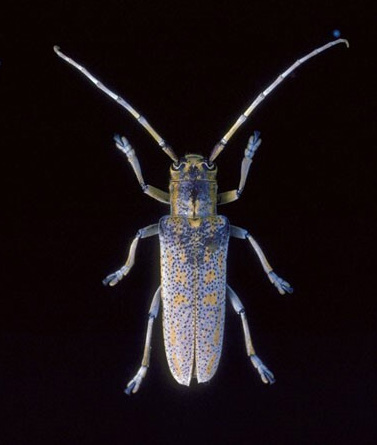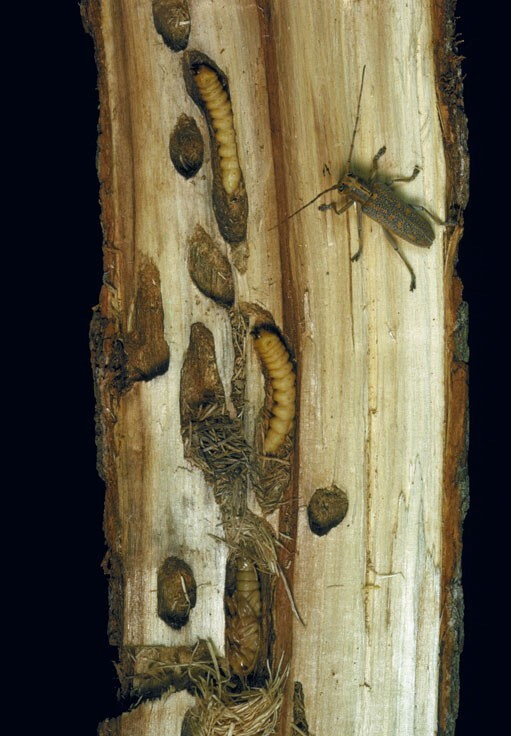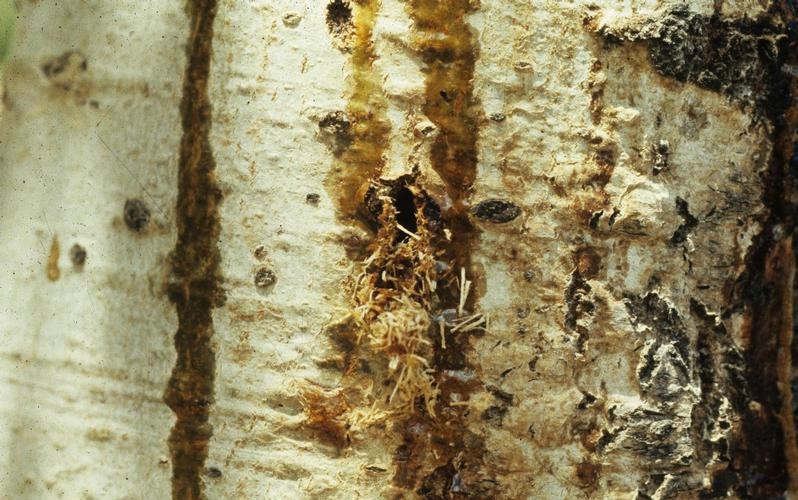Poplar Borer (Saperda calcarata)

Figure 1. Poplar borer adult. Photo by J. Solomon, USFS, Bugwood. Larger image (38KB).

Figure 3. Multiple stages of the poplar borer under the bark. Photo by J. Solomon, USFS, Bugwood. Larger image (124KB).
Hosts
Aspen, cottonwood, and poplar trees.
Damage and Symptoms
The larvae bore into the sapwood and girdle trees. Heavily infested trees will establish a blackish stain on the bark below the attack. During high winds, branches can break off, which can allow for further invasion of wood rot.
Life Cycle
The adults are active from June through August. The females will feed on the leaves and shoots for a couple of weeks. They then lay eggs on the surface of the bark, and the larvae will ultimately move into the sapwood. The larvae are a cream/yellow color, and they can reach over an inch long when mature. The larvae pupate in late spring beneath the bark. Adults start emerging in June. The life cycle of this beetle can reach up to three years.
Management
Make sure the tree receives adequate water. Plant aspen trees in large groups, so the trunks can be shaded. If the tree is heavily infested or showing major damage, it should be removed as it can negatively affect other trees in the area.
For biological control, there are insect-attacking nematodes that can be injected into the borer holes. Contact insecticides can be sprayed on the trunk prior to egg laying to prevent further infestation in the tree. Applications should concentrate mainly around infested areas of attack, if any, and on the middle areas of the tree. Systemic insecticides have shown limited success in controlling larvae that are already present in the tree.

Figure 2. Frass from insect tunneling. Photo by W. Cranshaw, CSU, Bugwood.
Further Information
To learn more about the topics discussed on this page, contact the Schutter Diagnostic Lab. If you suspect an infestation on your property, contact your local extension agent, the Schutter Diagnostic Lab at Montana State University, or the Montana Department of Agriculture.
This fact sheet is also available as a printable PDF (374KB).
Disclaimer: These recommendations are provided only as a guide. It is always the pesticide applicator’s responsibility, by law, to read and follow all current label directions for the specific pesticide being used. The authors and Montana State University assume no liability resulting from the use of these recommendations. The Montana State University Extension Service is an ADA/ EO/AA/Veteran’s Preference Employer and Provider of Educational Outreach.
